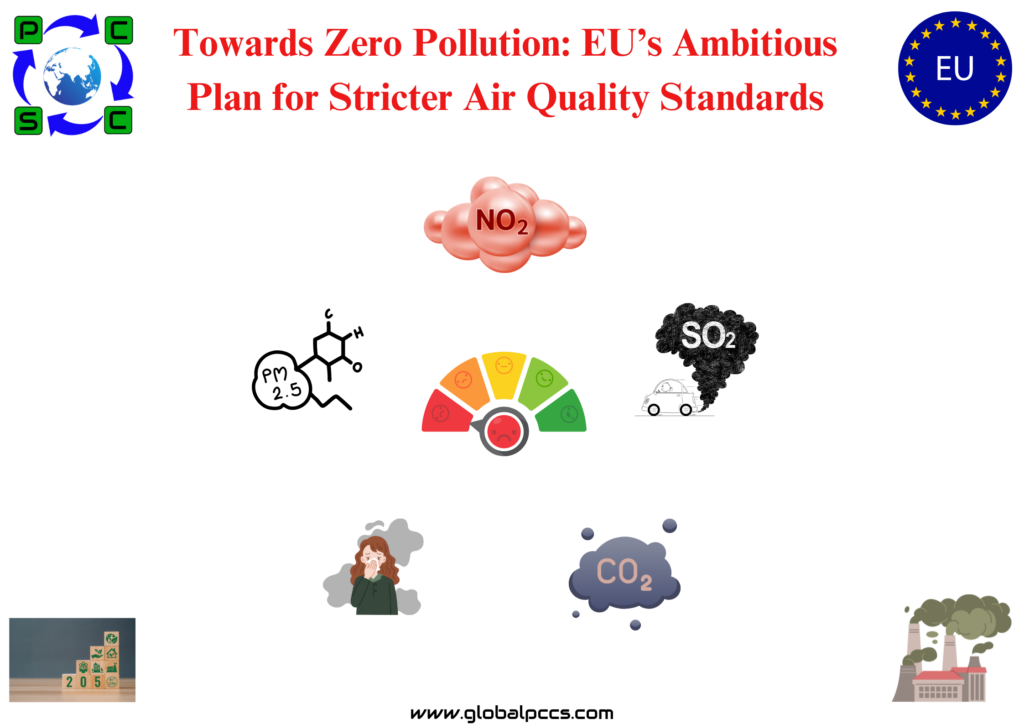
- Stricter limits by 2030 for a number of air pollutants.
- All member states should have equivalent air quality indicators.
- Citizens’ rights to compensation and access to justice.
- In the EU, air pollution causes over 300,000 premature deaths annually.
The new rule intends to cut air pollution in the EU in order to attain zero air pollution by 2050 and a clean and healthy environment for its residents.
In an effort to eradicate air pollution by 2050, representatives of the European Parliament, the Council, and the industry have come to a temporary political agreement on new measures that would ensure that the EU’s air quality does not endanger human health, natural ecosystems, or biodiversity.
Stricter air quality standards and targets
In comparison to the present regulations, the new regulations establish more stringent 2030 limits and target values for a number of pollutants, including particulate matter (PM2.5, PM10), nitrogen dioxide (NO2), and sulphur dioxide (SO2). The yearly limit limits for PM2.5 and NO2, the two pollutants having the largest established impact on human health, are to be more than halved, from 25 µg/m³ to 10 µg/m³ and from 40 µg/m³ to 20 µg/m³, respectively. Additionally, there will be more city-based air quality sampling locations. By December 31, 2030, the air quality standards will be reassessed. After that, they will be evaluated at least every five years, and more frequently if new scientific information becomes evident, as in the case of the World Health Organization’s (WHO) updated Air Quality Guidelines.
Member states may ask for an extension of up to ten years from the 2030 deadline for achieving the air quality limit values, provided certain requirements are fulfilled. One such circumstance is when the required reductions in pollution can only be accomplished by replacing a significant portion of the current residential heating systems that are exceeding the limits.
Better protection of citizens and access to justice
Co-legislators decided to make the existing dispersed air quality indexes throughout the EU transparent, comparable, and open to the public. In addition, these indices will include information specific to vulnerable populations as required by Parliament, as well as symptoms linked to air pollution peaks and the health hazards connected with each pollutant.
It was also decided that affected citizens and environmental non-governmental organizations should have access to the legal system to contest the way this Directive is implemented in member states, and that citizens should have the right to compensation in cases where the new national regulations are broken and cause harm to their health.
Air quality plans and roadmaps
In addition to air quality plans, required for those EU countries exceeding limits, all member states will have to create air quality roadmaps by 31 December 2028 that set out short- and long-term measures to comply with the new 2030 limit values as proposed by Parliament.








 Authorised IMDS & CDX Training & Consulting partner for
Authorised IMDS & CDX Training & Consulting partner for






